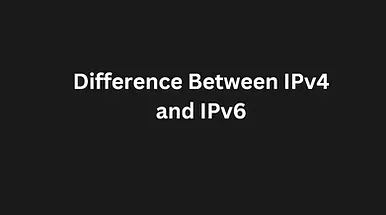The Internet Protocol (IP) serves as the fundamental framework for communication over the internet, facilitating the connection and data exchange between devices. There are two main iterations of IP: IPv4 (Internet Protocol version 4) and IPv6 (Internet Protocol version 6). While both versions fulfill the same role, they exhibit considerable differences in their characteristics, architecture, and operational capabilities. This article examines the essential distinctions between IPv4 and IPv6.
1. Address Space
One of the most noticeable differences between IPv4 and IPv6 is the size of their address space:
- IPv4: Uses a 32-bit addressing system, allowing for approximately 4.3 billion unique addresses. This limited number has proven insufficient due to the rapid growth of internet-connected devices.
- IPv6: Employs a 128-bit addressing system, which provides an almost unlimited number of unique addresses (around 340 undecillion). This vast address space is designed to meet future demands and support the growing Internet of Things (IoT).
2. Address Format
The way addresses are represented differs between IPv4 and IPv6:
- IPv4: Addresses are written in a dotted-decimal format, such as 192.168.1.1. Each number in the format ranges from 0 to 255.
- IPv6: Addresses are represented in hexadecimal format and separated by colons, such as 2001:0db8:85a3:0000:0000:8a2e:0370:7334. Leading zeros can be omitted, making the format more concise.
3. Header Structure
The header structure of IPv6 is simpler compared to IPv4, which improves processing efficiency:
- IPv4: Contains 12 fields, including optional fields. This complexity can slow down routing processes.
- IPv6: Has a streamlined header with only 8 fields, reducing overhead and allowing for faster data transmission.
4. Security
Security is a critical consideration in modern networks:
- IPv4: Security features, such as IPsec, are optional and not inherently integrated.
- IPv6: Includes built-in support for IPsec, providing better encryption and authentication mechanisms for secure communication.
5. Routing and Efficiency
IPv6 offers enhancements in routing and efficiency:
- IPv4: Relies on Network Address Translation (NAT) to extend its address space, which can complicate routing and network configurations.
- IPv6: Eliminates the need for NAT due to its expansive address space and supports better hierarchical routing, improving network performance.
6. Compatibility
Transitioning from IPv4 to IPv6 presents compatibility challenges:
- IPv4: Remains the most widely used protocol, supported by most legacy systems and devices.
- IPv6: Not backward compatible with IPv4. Dual-stack systems, which allow devices to use both IPv4 and IPv6, are commonly employed during the transition phase.
7. Auto-Configuration
IPv6 simplifies network configuration:
- IPv4: Requires manual configuration or the use of Dynamic Host Configuration Protocol (DHCP) to assign IP addresses.
- IPv6: Supports auto-configuration, enabling devices to configure their IP addresses automatically without relying on additional protocols.
Conclusion
Although both IPv4 and IPv6 play essential roles in internet communication, IPv6 effectively addresses several shortcomings of IPv4, such as the depletion of available addresses and inefficiencies in routing. Featuring a more extensive address space, enhanced security measures, and a more efficient architecture, IPv6 is tailored to accommodate the anticipated expansion of the internet. As global adoption of IPv6 progresses, it is vital for network administrators and technology enthusiasts to comprehend these distinctions.




Pingback: What Role Does IP Address Distribution Play in Network Connectivity? - NRS